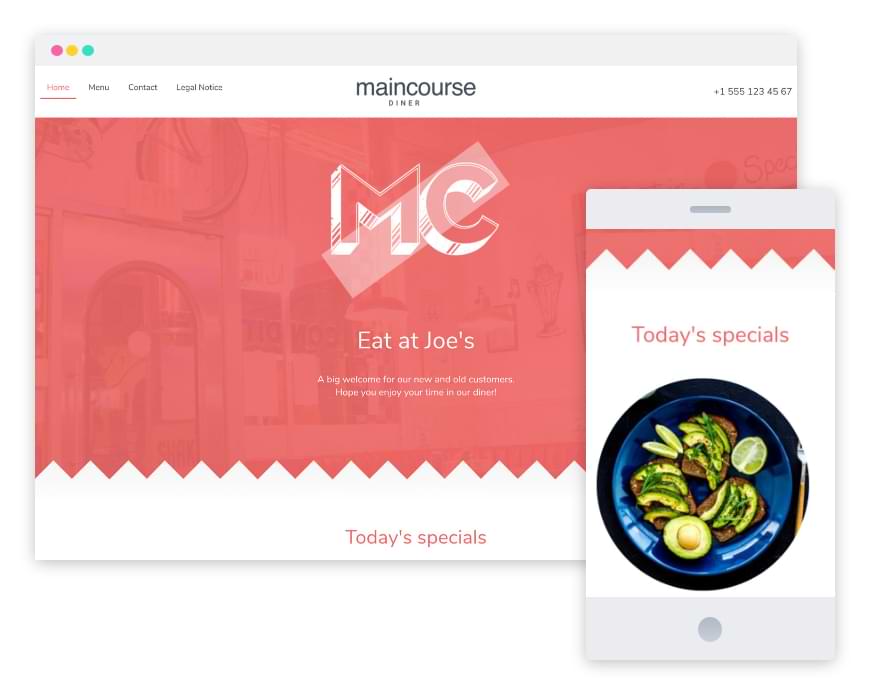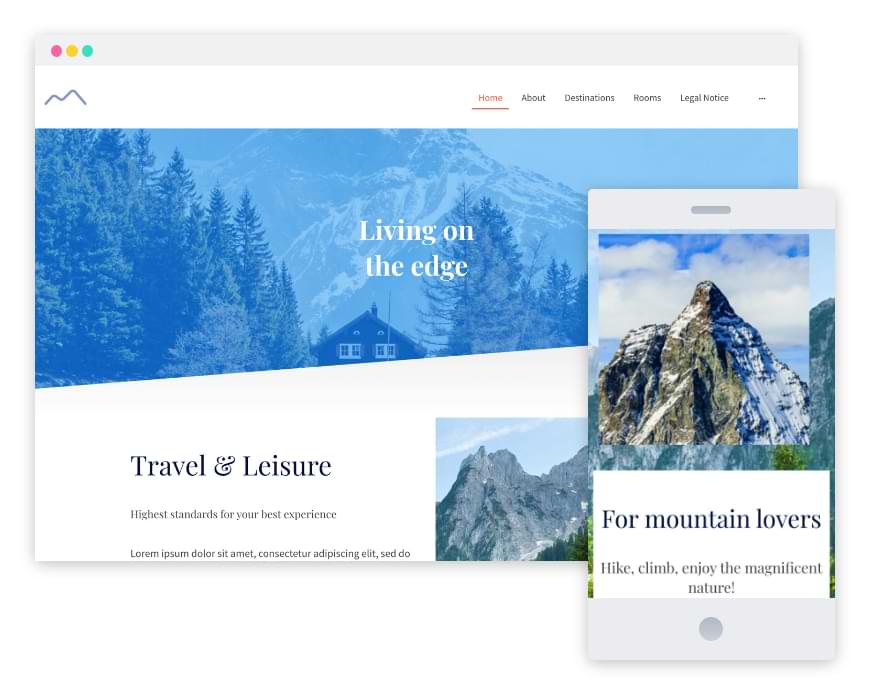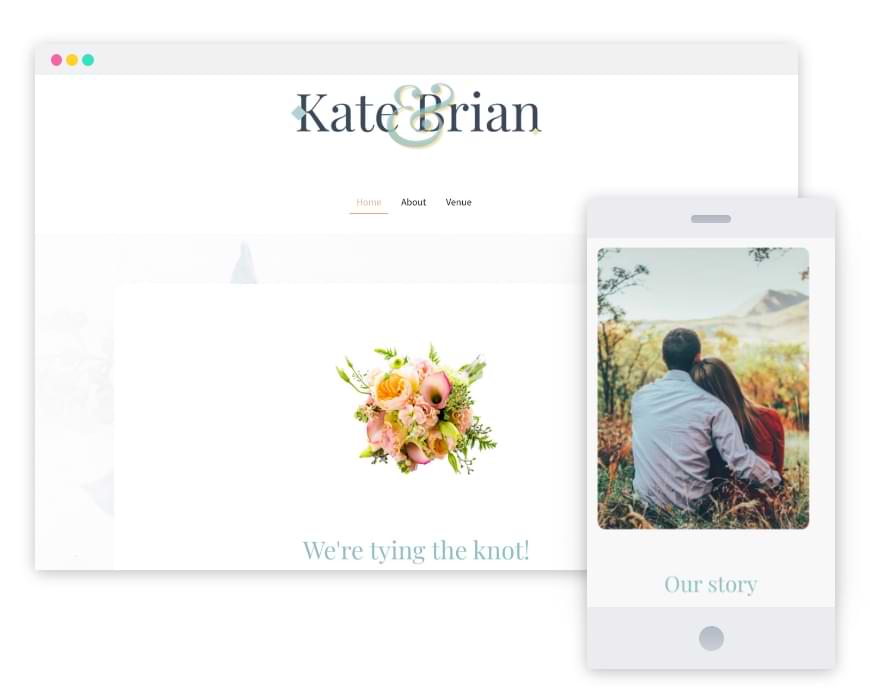Start a blog the easy way
- Learn how to choose the right software
- Plan your blog with our checklist
- Start blogging and share your story


What features do I need to create a blog?
There's a lot of blog software out there – make sure it covers all of these points.
-
Simple editing: Blog software is designed so you can start a blogging website and publish your content easily. It should have an intuitive editor to help you to format your texts and images, even if you don't have any tech or design experience.
-
Customisable designs: Choose a platform with a wide range of design templates so you can pick one that matches your brand or topic. Using a pre-built template speeds up setup, and leaves you free to focus on your content.
-
Structure: You'll be writing numerous blog posts, so you need to make sure they're well organised. Good blog software will display your posts clearly so you – and your followers – can always find them again.
-
Easy navigation: Visitors should be able to find their way around your blogging website easily, otherwise they’ll give up and leave.
-
Search engine optimisation: It's obvious – when you create a blog, you also want people to read it. Make sure you choose a blogging platform with integrated SEO so people can find your posts.

Build a blog website using templates
No design skills? No problem — just pick a design and start blogging.
You don't need to be a blogger and a web designer. As long as you choose blog software with pre-built templates, you'll get a great-looking blog without a lot of work. Modular systems and CMS like WordPress are easy to edit, so you can customize them to match your content. Using templates also means you'll save yourself the complication of working in a website's source code.
How to start a blog
Planning is key – start off organised and you'll be set for success.
1
Think of a catchy name
Your blog is part of your brand, so take the time you need to create a unique, memorable name. Finding a great name will also make it easy for readers to find you.
2
Get the design right
Think about your blog’s content when deciding on the design and make sure the structure is easy to understand and navigate. This is where the pre-made templates come in handy. They can be tailored to your blog’s needs.
3
Collect ideas for content
Put together a list of topics you’d like to cover on your blog. This will help you start to fill up your blog with interesting content and plan where you want to take it further down the line.
4
Write your first blog post
Don’t neglect the formatting of your blog. Once you've published your first blog post, it makes sense to follow the same format for future blog posts so that you blog is consistent.
5
Create categories
Assign a category to each post and then select meaningful tags that describe each post. These will help you find particular blog posts later on.
6
Share your content
To get as many people as possible to visit your blog, it makes sense to share links to it wherever you can. Social media and forums are great places to do this. Working together with other bloggers is also an option.
Build a website and add a blog
Customizable templates
Responsive design
SEO-ready
Tips via email
[[PRICE]]
From idea to website in record time with our AI Website Builder
Intuitive website editing with simple design options
Domain included for 1 year
Professional email address with 2 GB inbox
Includes 10 GB webspace & 10 pages
[[PRICE]]
From idea to website in record time with our AI Website Builder
Intuitive website editing with advanced design options
Domain included for 1 year
Professional email address with 12 GB inbox
Includes 50 GB webspace & 200 pages
SiteAnalytics
Integrated online booking tool
AI Text Generator & AI Text Improver
Professional design with AI Image Generator & AI Color Palette Generator
AI SEO Text Generator
[[PRICE]]
From idea to website in record time with our AI Website Builder
Intuitive website editing with advanced design options
Domain included for 1 year
Professional email address with active sync on all devices and 50 GB inbox
Unlimited webspace & pages
SiteAnalytics Plus
Integrated online booking tool
AI Text Generator & AI Text Improver
Professional design with AI Image Generator & AI Color Palette Generator
AI SEO Text Generator
SEO-optimization with rankingCoach Standard
State and local taxes will apply. Click here for our General Terms and Conditions.
Start your own blog
FAQ – Frequently asked questions
If you decide to write your own blog, there are lots of tools available to help you out. If you want a classic website with an integrated blog, a website builder like MyWebsite Now from IONOS is ideal.
Another way to create a blog is to opt for a content management system (CMS). WordPress is a popular choice as it caters to beginners and professionals. This software separates the design of the website from the content to make it really simple to publish new posts. With Managed WordPress Hosting from IONOS, all the technical parts get taken care of so you can concentrate on your ideas.
Find out more about creating a blog, in our Digital Guide.
When starting a blog website, remember that your content should deliver value to visitors. So put yourself in the readers’ shoes when you write your posts. Do this when coming up with topic ideas as well as when deciding on the presentation. Break up your blog posts with images, lists, and subheadings so they're easier to read.
Another important aspect when writing a personal blog is that you need to post new content regularly. If you publish a couple of posts per week, readers will want to come back to check out the latest. This is the perfect way to gradually build up readership and gain regular followers.
Yes, a blog has great added value for a business as long as you cover relevant topics. A successful business blog shows your clients how knowledgeable your company is and helps to gain their trust. It’s also a way to create customer engagement. Ask questions so that readers can get in touch with you either by commenting, by emailing, or by using their own blog. This way of conversing also enables you to collect important information from your clients and potential clients. You'll also pick up learnings and SEO-boosting links that can bring in more visitors. A new reader could be your next customer!
As long as you have good ideas, passion, and the basic technical framework, you can make it as a blogger. You don’t have to worry about not having much (or any) technical knowledge since most software options for starting your own blog are beginner-friendly. However, building up a following takes time so you need to be patient – don’t expect success overnight. You might only have a few readers at the beginning and then notice your community growing as you share more posts. Being active on social media can also help promote your blog.
You can write a blog about any topic you want. Whether it’s cooking, crafting, baking, cycling – the important thing is that you are passionate and knowledgeable. In addition, it’s important to find your own style when writing the blog so you stand out from other bloggers and catch readers’ attention. Whatever you do, don’t copy what other bloggers have written or pretend to have an interest in something you don’t. Readers will quickly notice and lose interest in you and your blog.
Yes, and it’s a really good idea to do so. Your logo is part of your brand and it’s how to get recognised across the web. You don’t even need to hire a graphic designer to create a blog logo – use the IONOS Favicon Generator. This creates small graphics, which are then displayed in the browser tab. Another helpful IONOS tool is the Logo Maker. You can use it to design a logo for free.
Didn't find what you were looking for?
We may have the ideal solution for you.





